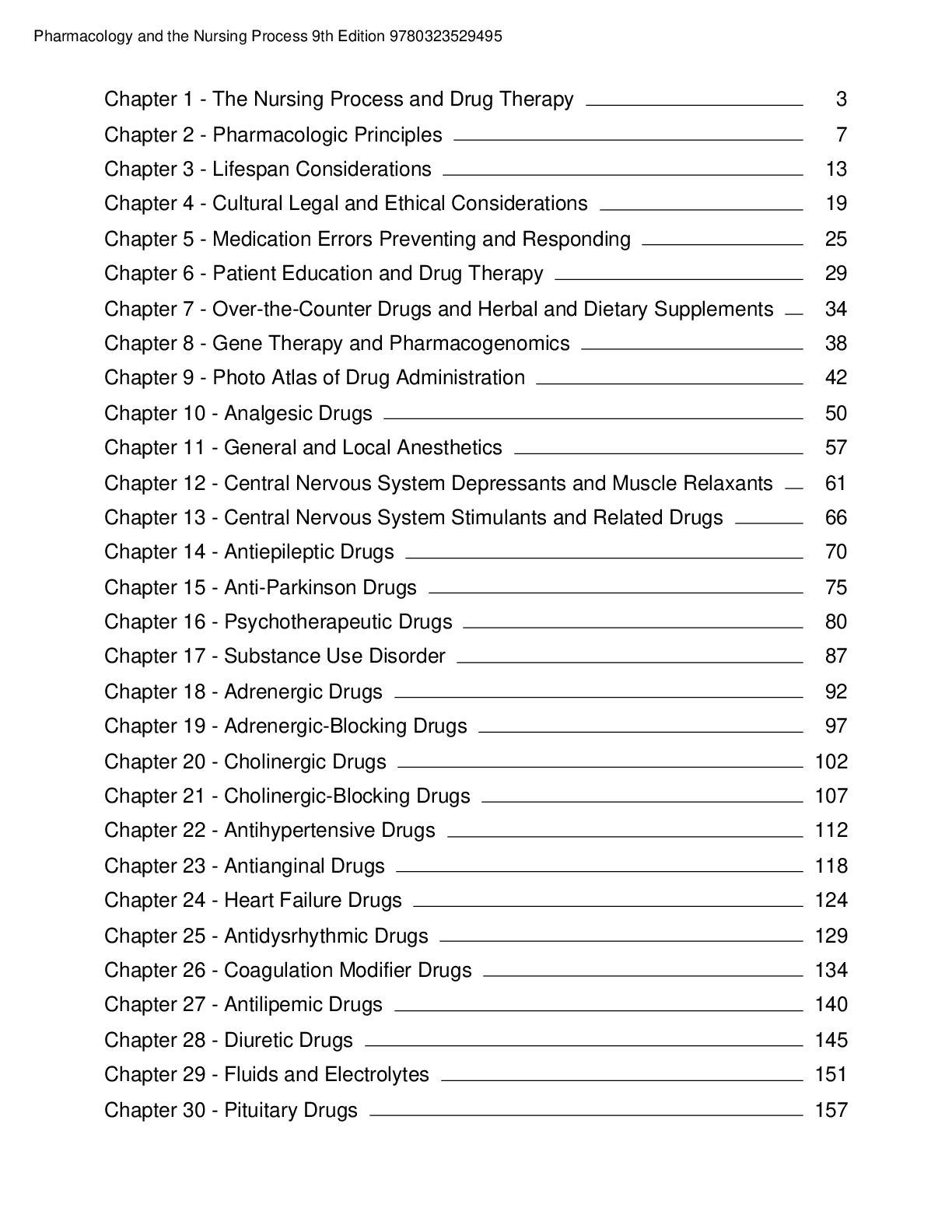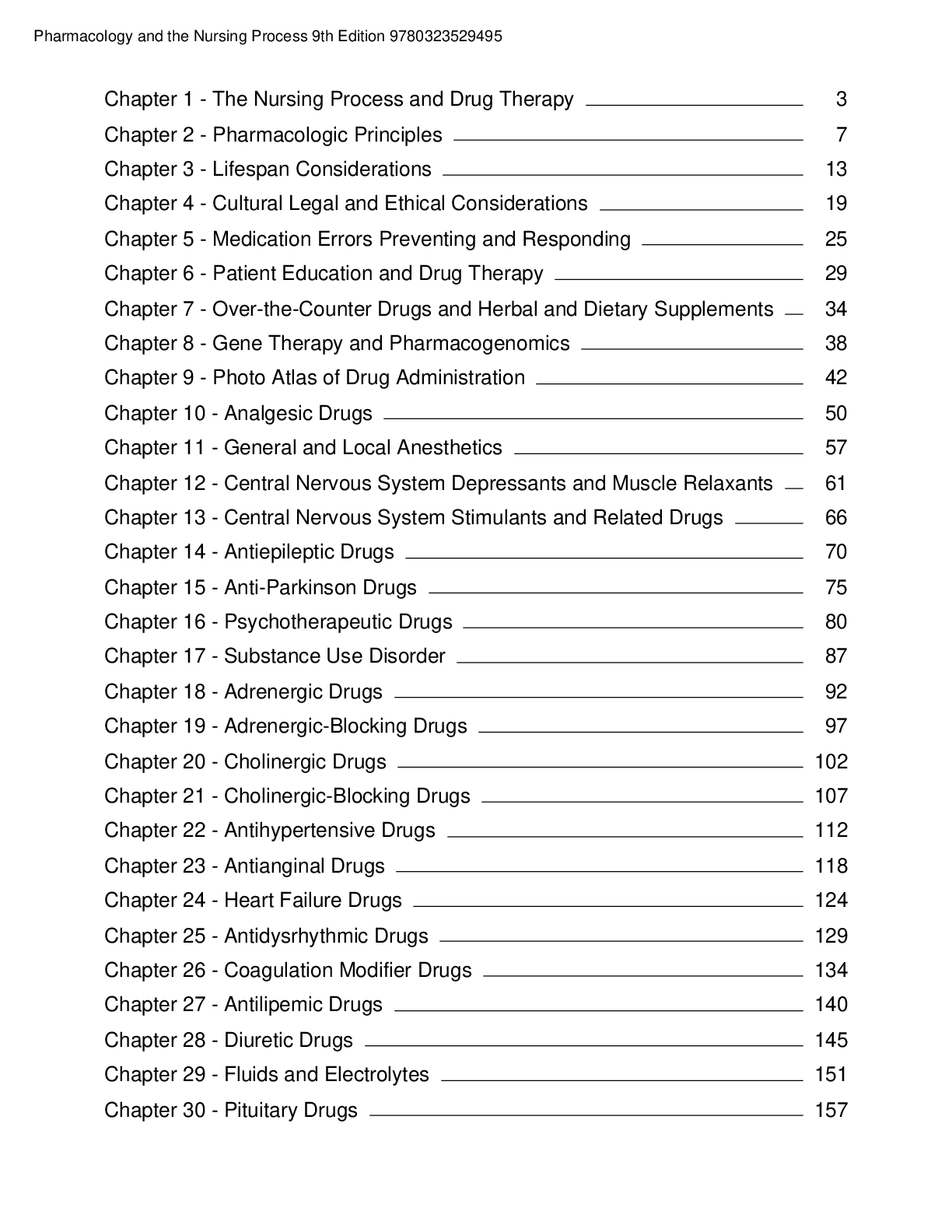Pharmacology and the Nursing Process, 9th Edition (Lilley)
Course
Project Management
Subject
Chemistry
Category
Questions and Answers
Pages
310
Uploaded By
ATIPROS
Preview 5 out of 310 Pages


Download all 310 pages for $ 16.50
Reviews (0)
$16.50
